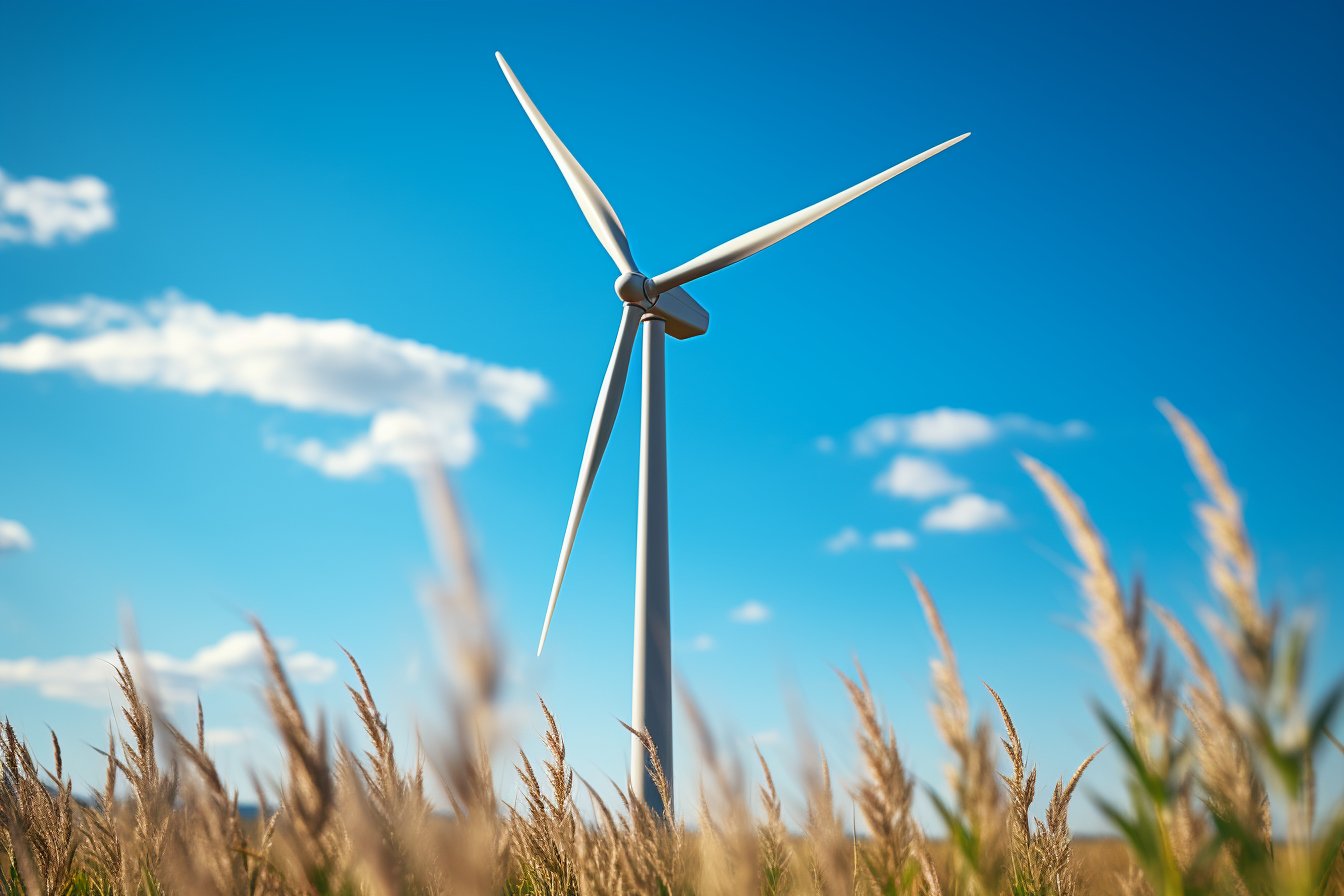Deceptively simple in appearance, the wind turbine represents the perfect convergence of technical ingenuity and natural forces. The wind, this invisible traveler of the sky, offers much more than just a refreshing breeze. Transformed by the technical prowess of the wind turbine, it becomes a source of clean and renewable energy. Let’s dive into the heart of this fascinating mechanism and discover together the astonishing process by which a wind turbine transforms wind into usable energy.
The key components of a wind turbine
To understand how the wind turbine achieves this technical feat, let’s start by breaking down its structure. Composed mainly of a mast, blades, a rotor and a generator, each part plays a fundamental role in its functionality.
The mat constitutes, in a way, the skeleton of the wind turbine. Generally culminating at around a hundred meters in height, it provides the strongest and most constant winds.
Standing proudly towards the sky, the blades are the first point of contact with the wind. Their aerodynamic shape allows them to capture the kinetic energy of the wind and transform it into mechanical energy through rotation.
At the end of the mast, we find the rotor, the true brain of the wind turbine. Made up of the blade axis and a multiplier, it increases the rotation speed of the blades, thus amplifying the energy recovered.
Finally, at the back of the wind turbine, is the generator. This is where electricity is created, thanks to a dynamo which converts mechanical energy into usable electrical energy.
Transforming wind into energy: a multi-step process
At the heart of this technological ballet, the wind plays the main role. With a simple breeze or during the fiercest storms, it offers an inexhaustible and non-polluting source of energy, captured and transformed by wind turbines.
The axis of the blades in motion : It all starts with the interaction between the wind and the blades. The kinetic energy of the wind is captured by them, causing them to rotate. This movement is transferred to the axis of the blades, the first step towards transforming wind into energy.
Amplification of recovered energy : The rotor, located at the end of the mast, plays a determining role. It is equipped with a multiplier which allows the rotation speed of the blades to be significantly increased, from 60 to 80 revolutions per minute to several thousand revolutions per minute.
Conversion of mechanical energy into electrical energy : The mechanical energy thus recovered is then routed to the generator. Thanks to a dynamo, this energy is converted into electrical energy by the principle of electromagnetic induction.
Energy distribution : Once produced, the electricity is transported by the wind turbine cables to a transformer which converts it into high voltage to be injected into the electricity network.
Towards green and sustainable energy
Majestic sentinels of our landscape, wind turbines play a major role in progress towards greener and sustainable energy production. By capturing wind energy, an inexhaustible and renewable source, they actively contribute to the reduction of greenhouse gases by offering an alternative to fossil energy sources. Thus, far from being a simple technical feat, the wind turbine represents a real solution for a healthier energy future for our planet.
So this is the incredible journey that the wind makes, from the heights of the heavens to our homes in the form of usable energy. A journey made possible thanks to the astonishing mechanism of the wind turbine, a technology in perfect symbiosis with the forces of nature.












